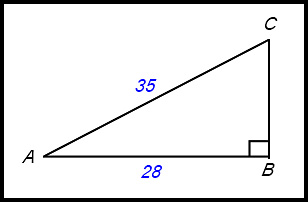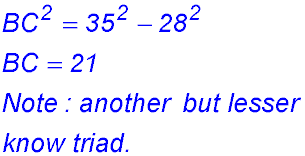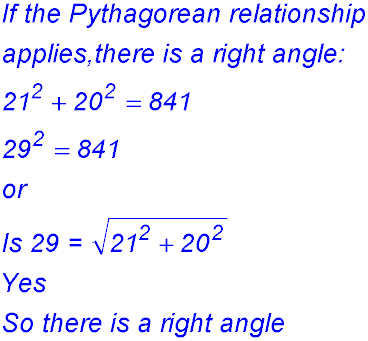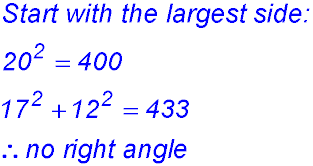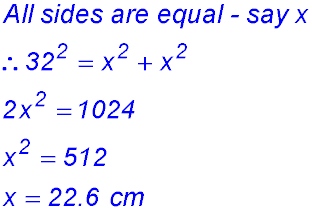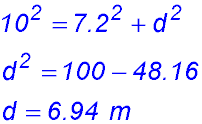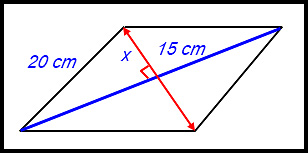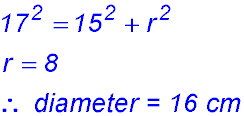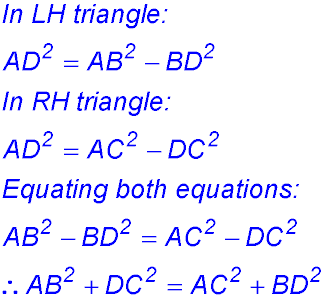Where the techniques of Maths
are explained in simple terms.
Geometry - Pythagoras' Theorem - basic concepts.
Test Yourself 1.
- Algebra & Number
- Calculus
- Financial Maths
- Functions & Quadratics
- Geometry
- Measurement
- Networks & Graphs
- Probability & Statistics
- Trigonometry
- Maths & beyond
- Index
All the triangles in the following questions are right-angled.
Remember the hypotenuse is the side opposite the right angle
so start by writing down that pronmeral or value first and then squaring it.
| Basic relationships | 1. 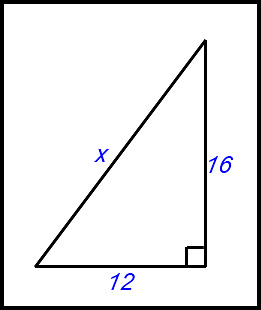
Put all into your calculator in one action. |
2.
|
3. 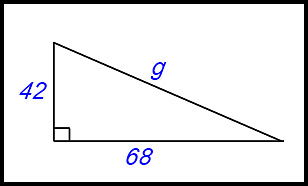
|
4. 
|
|
5.
|
6.
|
|
7.
|
8.
|
|
9.
|
10.
|
|
Test for a right angle. REMEMBER: The hypotenuse of a right angled triangle is always the longest side. So use the squares of the other two numbers. |
11.
|
12.
|
13.
|
14.
|
|
| Test if a triad |
15. Does the set of three numbers {14, 18, 23} form a Pythagorean triad?
|
16. Is the set of numbers {6, 3, 4} a Pythagorean triad?
|
|
17. Is it correct to describe the numbers {120, 150, 90} as forming a Pythagorean triad?
|
18. Does the set of three numbers {64, 48, 80} form a Pythagorean triad?
|
|
| Applied questions | 19. 
|
20. 
|
21.
|
22. 
|
|
23.
|
24. 152 = 7.52 + h2 h = 13.0 cm. |
|
25. In the top triangle, let the height be x cm and the part of the diagonal be 7.5 cm. Remember: the diagonals of a rhombus bisect each other at right angles.
|
26.
|
|
27.
|
28.
|
|
| 29. | 30.
|
|
Old classics. |
31.  |
 |
| Q32: Taken from a question posed about 630 AD by the Hindu mathematician Brahmagupta. | 32. 
|
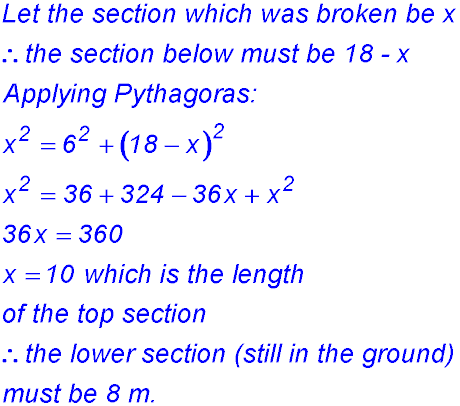 |















